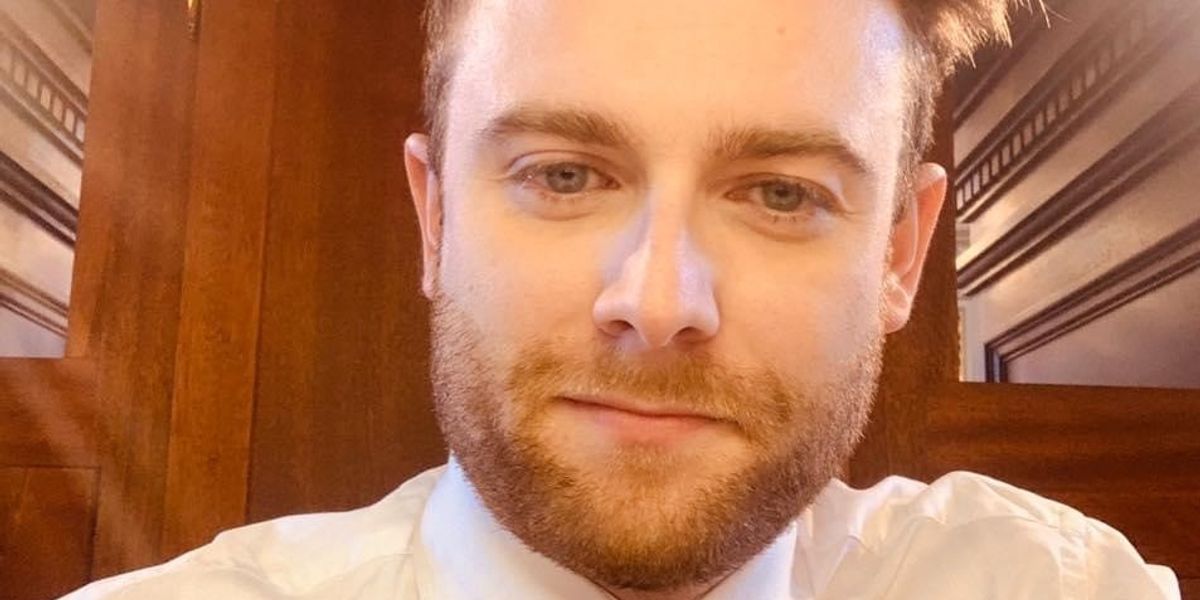 Crossovers and connections were the name of the game from start to finish of this particular prom. The outfit that is Public Service Broadcasting has drawn inspiration in the past from the founding principles and the earliest days of the BBC, to Inform, Educate and Entertain. In turn they were approached to compose this tribute and celebration in the corporation’s centenary year. PSB’s trademark rhythms and cycles were in evidence together with their familiar blend of visuals and samples of spoken word. Lighting effects added another layer but the major difference on this occasion was the presence of the full orchestral family, and, to my added pleasure and surprise, the contribution of the hall’s splendid Willis organ.
Crossovers and connections were the name of the game from start to finish of this particular prom. The outfit that is Public Service Broadcasting has drawn inspiration in the past from the founding principles and the earliest days of the BBC, to Inform, Educate and Entertain. In turn they were approached to compose this tribute and celebration in the corporation’s centenary year. PSB’s trademark rhythms and cycles were in evidence together with their familiar blend of visuals and samples of spoken word. Lighting effects added another layer but the major difference on this occasion was the presence of the full orchestral family, and, to my added pleasure and surprise, the contribution of the hall’s splendid Willis organ.
In preparation for the work to begin an early domestic radio receiver was brought in and placed in a prominent position and we heard the sound of the valves warming up and the transmission about to begin.
Taking its name from Charlotte Higgins’ excellent history of the BBC This New Noise consists of 8 movements tracing the history of the BBC from the earliest experiments, its founding and developments in technology. The fourth movement featured the highly anticipated appearance of Seth Lakeman singing about the opening of the first national transmitter in 1927. Sadly it was impossible to make out most of his words as the level of his microphone was not adequately balanced. The matter of balance was also an issue with many of the sampled voices heard throughout the performance. It was such a pity that this technical issue resulted in a loss of impact at several points in the story.
George Bernard Shaw was heard – and seen – praising the wonder that is the microphone. Sounds and pictures of broadcasting and receiving around the country and in other parts of the world featured throughout with close ups of the newly created technology and a soundtrack that could be intimate and at times epic.
The blend of elements and moments of wonder, celebration and poignancy made for a highly immersive experience which was well received by a large and appreciative audience. At the same time nostalgic and forward-looking this piece deserves to be seen and heard again. Fortunately it was recorded and is due to be broadcast on BBC 4 very soon and will be available on the I-Player. I hope we shall also see a commercial recording soon. The point was well made that the composition only came into being through a huge amount of collaboration and itself is an example of the innovative and authoritative work that the BBC does so well.
The final movements built towards the question of the future. The importance of broadcasting was highlighted, not as an end in itself, but as a means to enhancing and broadening our communal lived experience. It should not be viewed simply in commercial and business orientated terms.
We had been partially prepared for the work’s ending but I think it still surprised and deeply moved many in the audience. Whilst the music continued the players gradually left the stage as everything was stripped bare and the antique radio set was removed leaving us to contemplate the frightening prospect of the demise of the BBC as being threatened in some political quarters. Nothing could replace it – there would simply be a void.
At this Prom I was most definitely Informed, Educated and Entertained.
Stephen Page

 Jamie Rogers, Assistant Director of Music at Canterbury Cathedral, made his first visit to Hastings with a programme that drew heavily on the concept of freely improvised works. Opening with a spirited performance of Bairstow’s Allegro Giocoso- a work that sounds more modern than it is – his programme also included a Fuga in C by Buxtehude and a Prelude in E by his contemporary Bruhns. From the same period we also heard Prelude & Fugue in G by JS Bach. The choice to play this with much sparser registration than would normally be expected was an interesting one but it did result at times in rather indeterminate lower registers.
Jamie Rogers, Assistant Director of Music at Canterbury Cathedral, made his first visit to Hastings with a programme that drew heavily on the concept of freely improvised works. Opening with a spirited performance of Bairstow’s Allegro Giocoso- a work that sounds more modern than it is – his programme also included a Fuga in C by Buxtehude and a Prelude in E by his contemporary Bruhns. From the same period we also heard Prelude & Fugue in G by JS Bach. The choice to play this with much sparser registration than would normally be expected was an interesting one but it did result at times in rather indeterminate lower registers.